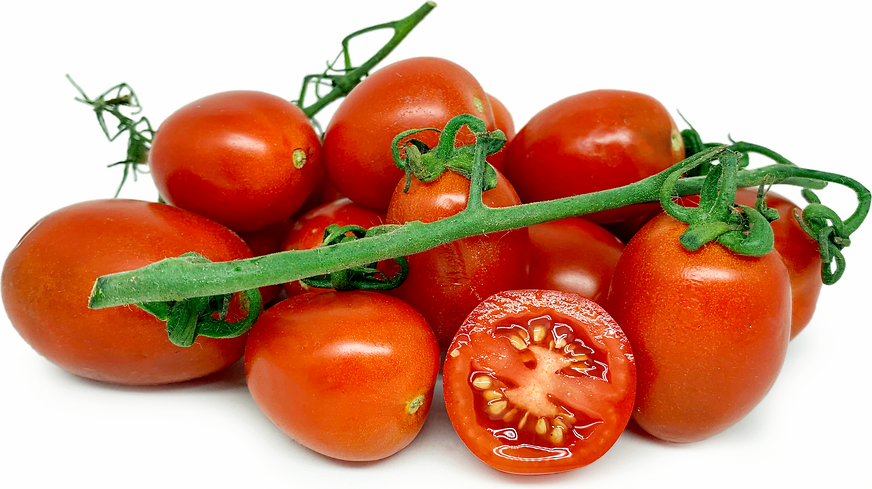


Piccadilly Tomatoes
Estimated Inventory, lb : 0
Description/Taste
Piccadilly tomatoes are elongated, oval to spherical fruits that are somewhat uniform in appearance with smooth, curved edges. The skin is firm, glossy, and thin, ripening from green to bright red when mature. Underneath the surface, the flesh is crunchy, aqueous, and red, encasing a central cavity filled with edible, cream-colored seeds suspended in clear liquid. Piccadilly tomatoes are known for their high sugar and water content, creating a juicy consistency with a sweet and savory flavor.
Seasons/Availability
Piccadilly tomatoes are available year-round, with a peak season in the winter through summer.
Current Facts
Piccadilly tomatoes, botanically classified as Solanum lycopersicum, are an Italian variety that belongs to the Solanaceae or nightshade family. The thin-skinned tomatoes grow in clusters of 6 to 15 fruits and are favored in southern Italy for their extended storage capabilities, flavor, and versatility in culinary applications.
Nutritional Value
Piccadilly tomatoes are an excellent source of vitamin C, which is an antioxidant that can increase collagen production, protect the body against environmental aggressors, and boost the immune system. The tomatoes also contain beta-carotene, which is converted to vitamin A in the body, and lycopene, which is an antioxidant that can help fight against free radicals.
Applications
Piccadilly tomatoes are best suited for both raw and cooked applications such as roasting, boiling, sautéing, and baking. The small tomatoes can be sliced and used fresh in green salads, lightly dressed in oils, or chopped and sprinkled over bruschetta. They can also be cooked and blended with their skin on for sauces, pastes, and purees, and the thin skin allows for the flesh to be mixed easily into risotto, pasta, and casseroles. Piccadilly tomatoes can also be used as a pizza topping, sliced in half and stuffed with cheeses, boiled into soups, or dried and stored in flavored oils. Piccadilly tomatoes pair well with meats such as beef, poultry, and fish, seafood, cheeses such as parmesan, grana padano, and mozzarella, artichokes, potatoes, eggplant, cucumbers, garlic, leeks, olives, and herbs such as oregano, basil, sage, and rosemary. The fresh tomatoes will keep 4-6 weeks when stored in a cool, dry, and dark place.
Ethnic/Cultural Info
In southern Italy, Piccadilly tomatoes are popularly hung on their vines in Italian kitchens as an ornamental method of storing the fruits. The small, firm tomatoes can be kept for extended periods when immersed in a well-circulated, cool area, and in addition to their culinary value, they are also favored for their bright red coloring when stored in groupings. Piccadilly tomatoes are also a preferred variety used in pastes, sauces, and dried applications, known in Italy as pomodori sechi. When dried, the tomatoes are stored in jars filled with spices, olive oil, onions, and garlic. These sundried tomatoes are used in everyday cooking and can be minced and mixed into salads, cooked meats, soups, and pasta.
Geography/History
Piccadilly tomatoes are native to southern Italy and are believed to have been developed from an ancient vesuvian tomato variety. While the exact date of origin is unknown, today Piccadilly tomatoes are mainly produced in the regions of Sicilia, Campania, and Puglia in Italy, and are sold in local markets across Europe. The variety is also found through online seed catalogs for home garden use in the United States.
Recipe Ideas
Recipes that include Piccadilly Tomatoes. One








